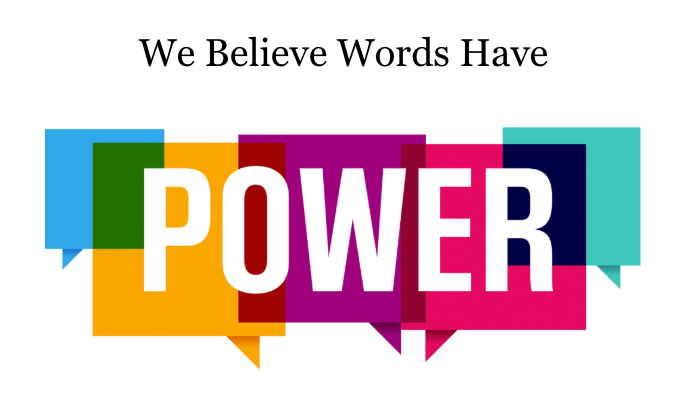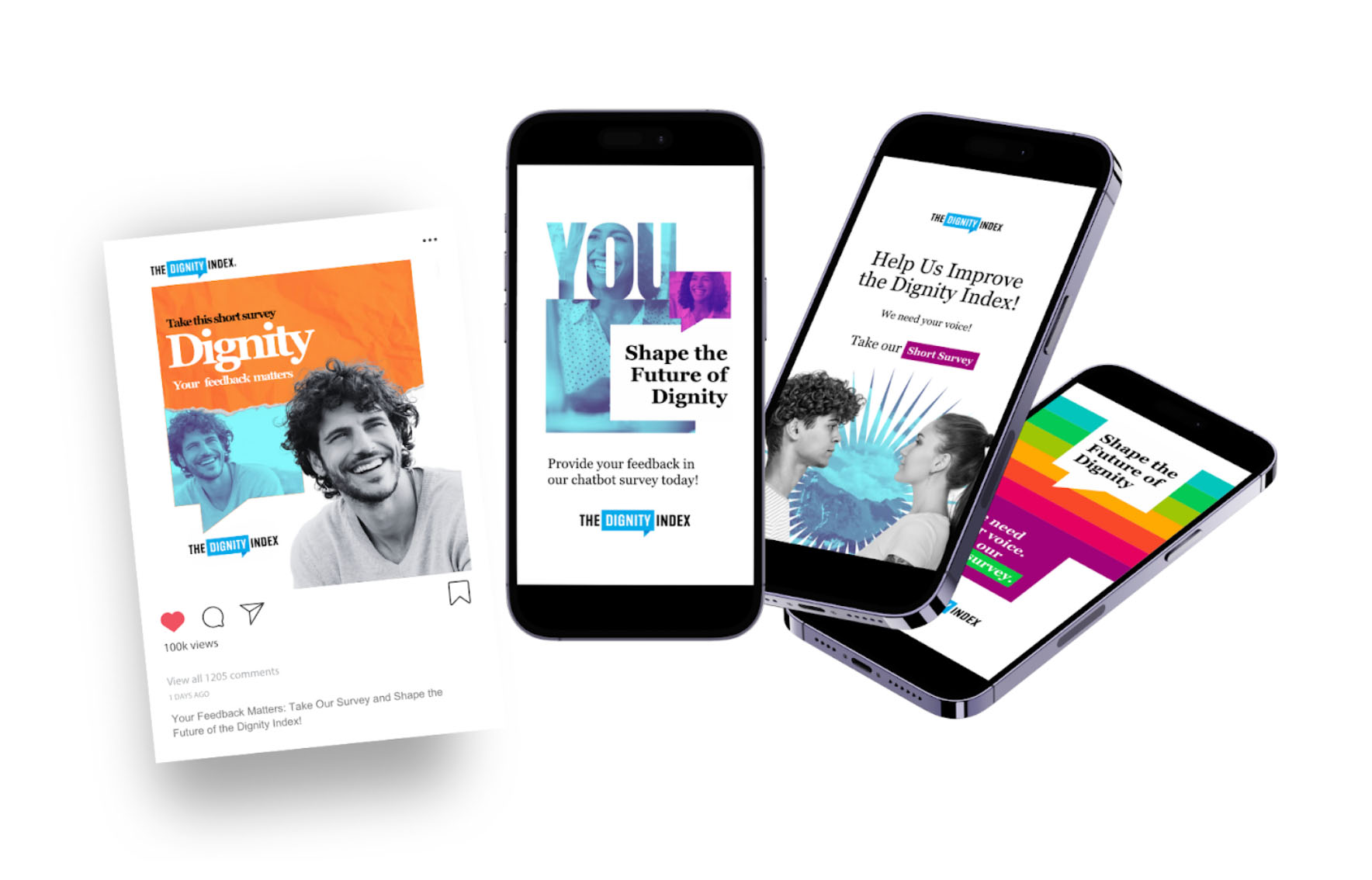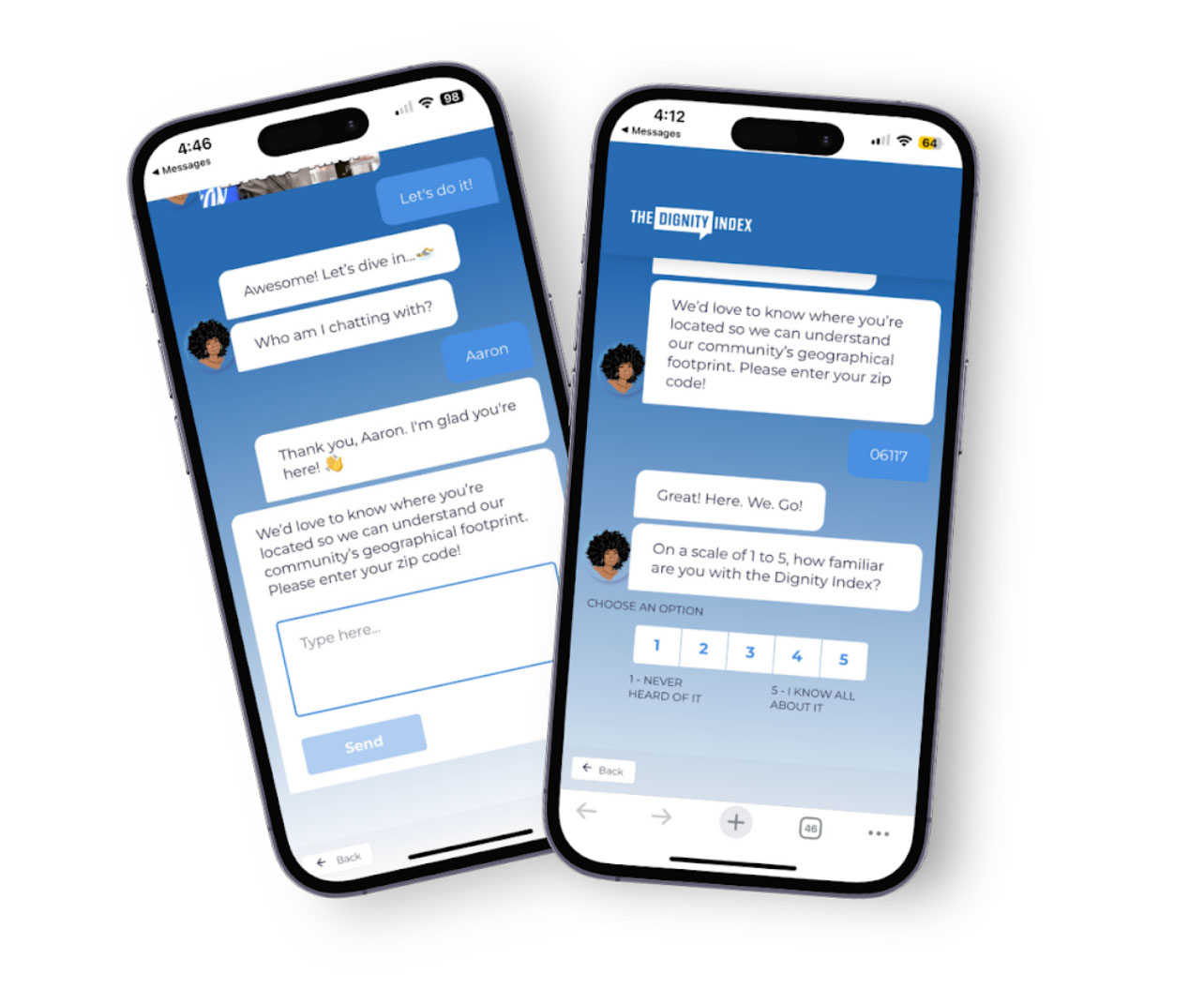
Email Opt-In Rate
Survey Completion Rate
Completed Surveys

The survey results enabled GoodChat to define key demographics and segment their audience, providing insights into participants' levels of interest, motivation, and financial willingness to invest in skills. This segmentation highlighted which groups are most likely to engage with and support the Dignity Index’s mission through potential product offerings.

The survey provided valuable insights into the Dignity Index audience, revealing key audience segments with varying levels of familiarity, engagement, and readiness to further their mission. These findings allowed GoodChat to identify audience segments well-aligned with The Dignity Index’s goals, including groups more inclined to invest in learning and applying dignity-centered principles. This understanding lays the groundwork for targeted strategies to foster engagement, deepen audience investment, and extend their reach.